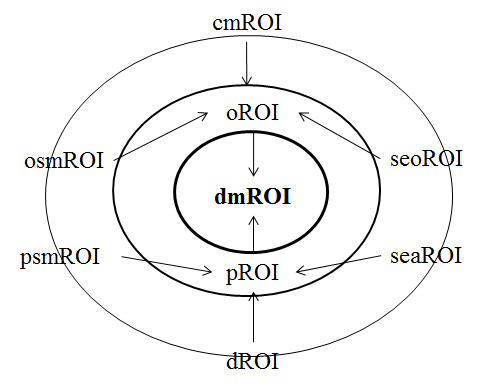Last updated on May 5, 2020
Introduction
There are many sub-types of ROI calculations in digital marketing. This post aims at making an argument that digital marketers should measure digital marketing returns as a sum of sub-returns from different channels/actions. Through that, they are able to capture the ROI impact on a wider scale than just looking at overall sales. Some metrics which inevitably have (some, albeit often hard to quantify) effects on dollar-returns, can only be accessed via a sub-type examination.
Profit, not revenue
Before going into the ROI types, I have to mention one important caveat in ROI calculation — whenever possible, use profit as the upside, not revenue. This is simply because you want to measure the real profitability of your marketing efforts, which you cannot determine without including production costs into the equation. Don’t only measure marketing cost, measure the cost of being in business (because that’s what your bottom line consists of).
Digital marketing ROI

Figure 1 Digital marketing ROIs
So, here are different ROI sub-types in digital marketing:
- dmROI = digital marketing ROI
- oROI = organic digital marketing ROI
- pROI = paid digital marketing ROI
- osmROI = organic social media ROI
- seoROI = search-engine optimization ROI
- cmROI = content marketing ROI
- psmROI = paid social media ROI
- seaROI = search-engine advertising ROI
- dROI = display ROI
And they can be divided like this:
dmROI = digital marketing ROI
consists of
oROI = organic digital marketing ROI
consists of
osmROI = organic social media ROI
seoROI = search-engine optimization ROI
cmROI = content marketing ROI
and
pROI = paid digital marketing ROI
consists of
psmROI = paid social media ROI
seaROI = search-engine advertising ROI
dROI = display ROI
Different returns
Now, the ROI equation has two sides: the cost and the return. As said, the return side measures the profit. But what happens when the profit is not directly computable? Such can be the case in deferred conversions, multi-channel effects and word-of-mouth, for example.
In this case we need to substitute profit with some other quantifiable measure. If one is not available, we have to calculate it.
The returns can be something like this:
- Value of sales — this is simply euros
- Value of customer lifetime — this is average order value times average frequency of repurchases during average customer lifetime (a lot of averages here…)
- Value of impressions — for example, the increase of brand searches and their association with sales
- Value of social shares — for example, the increase of organic reach leading to likes and associated returns
- Value of likes — for example, the amount of sales from a social media channel divided by the number of followers in the channel in a given period
- Value of email subscribers — the amount of sales from email channel divided by number of subscribers in a given period
- Value of leads — the closing rate times average deal size gives the value of a lead
- Value of organic traffic increase — the sales uplift from SEO activities vis-à-vis normal development of organic search traffic
We should aim at isolating the marketing effects to the best of our ability, i.e. determine what the baseline metric would have been without the marketing intervention and what it was; the difference between the two is our return. In a similar vein, we should seek to attribute not only direct but also indirect (assisting) interaction effects in the return side of a given marketing channel/effort. Not everything that should be observed can be observed (cf. Einstein), so we have to use arbitrary mechanisms such as attribution modeling.
Different costs
In turn, how should we define the costs?
- In paid channels, they include media + labor costs
- In organic channels, they include labor costs
There is a good rule of thumb: to achieve a certain reach, you need either high labor cost (and low media cost) or a high media cost (and low labor cost). Of course, the practical implementation decides the outcome, but this is the ceteris paribus scenario. The labor cost can be determined by internal accounting, e.g. activity-based costing (ABC). This cost calculation you can also use to determine “make or buy” decision – i.e., whether outsourcing digital marketing is feasible or not.
Conclusion
ROI is a fascinating question of which there is not certainty or absolute truth. Bringing in the sub-type examinations widens the scope of ROI and makes its constituency more accurate, yet leads into some sort of relativism, manifested e.g. in the choice of attribution models.
